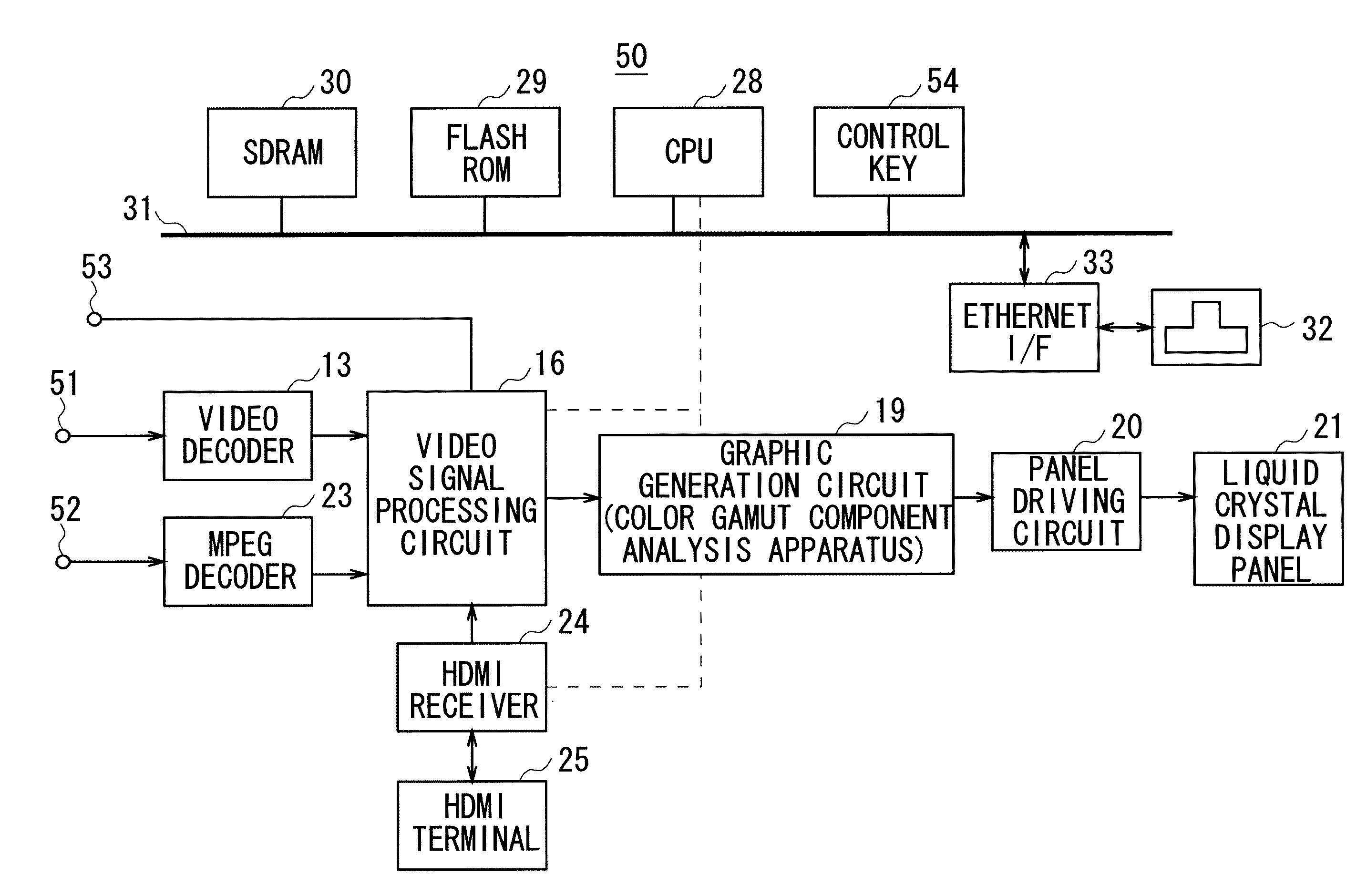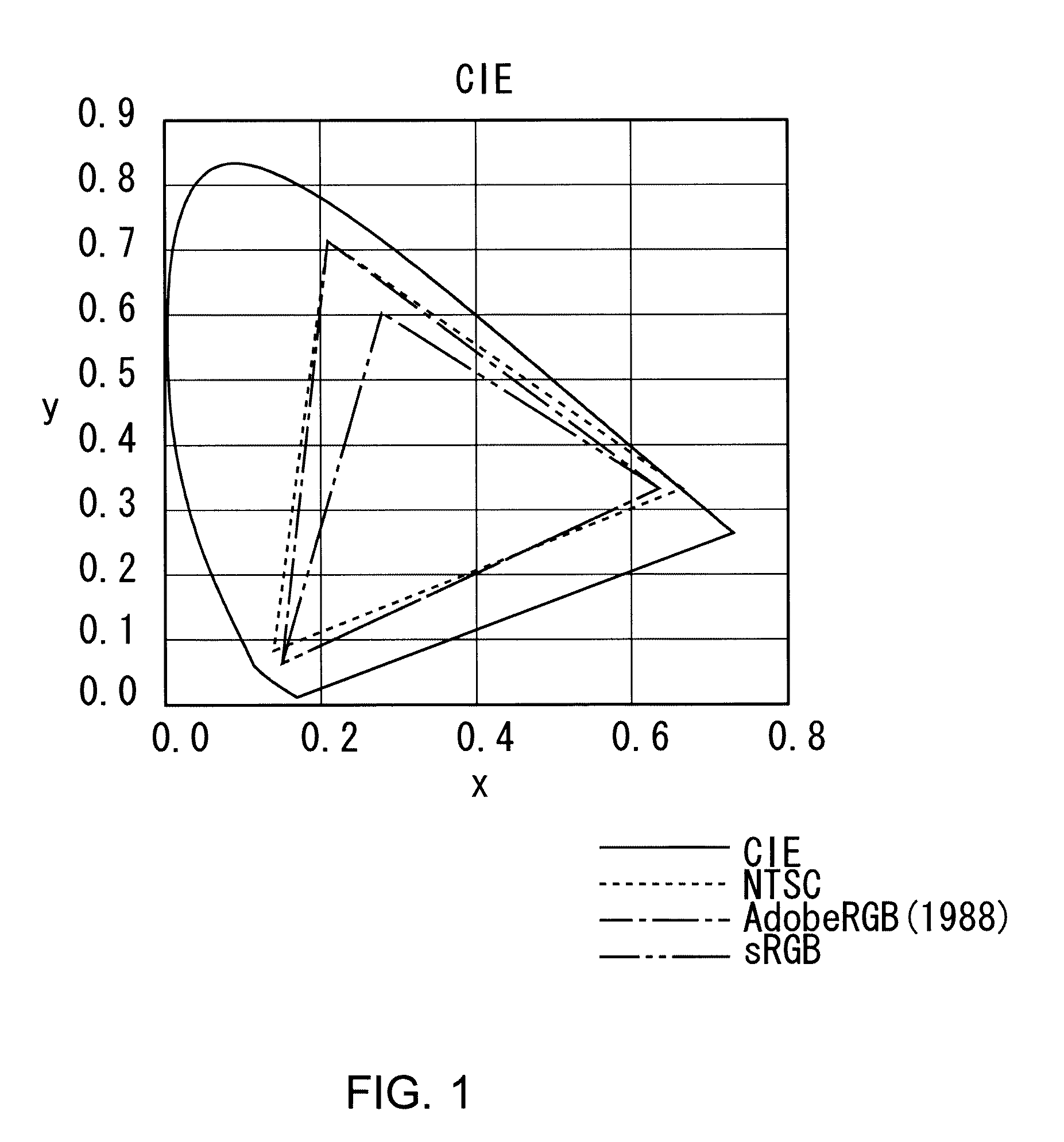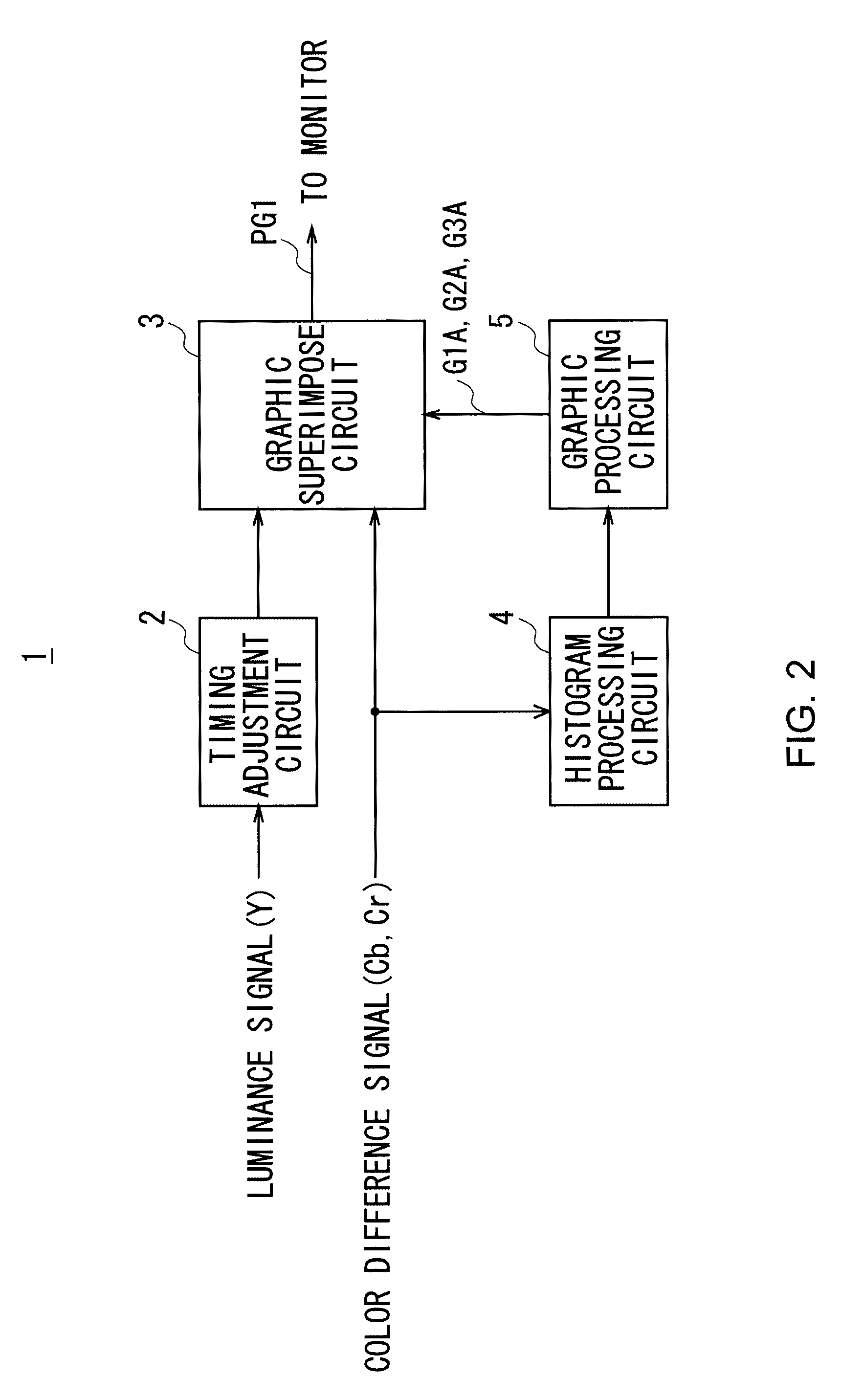Color gamut component analysis apparatus, method of analyzing color gamut component, and color gamut component analysis program
- Summary
- Abstract
- Description
- Claims
- Application Information
AI Technical Summary
Benefits of technology
Problems solved by technology
Method used
Image
Examples
Embodiment Construction
[0025]An embodiment of the present invention will be described in detail with reference to the accompanying drawings.
(1) Chromaticity Distribution by Each Signal Standard
[0026]In FIG. 1, a difference in color areas according to standards of a video signal is shown. They are a chromaticity distribution in the Comission Internationale de I'Eclariage (CIE) color system, a chromaticity distribution by the NTSC standard, a chromaticity distribution by the AdobeRGB (1988) standard, and a chromaticity distribution by the sRGB standard, of a standard white.
[0027]In the sRGB standard that has been the mainstream of a conventional video signal, the color area of a Cathode Ray Tube (CRT) is considered, and it is considerably narrower than the NTSC standard. In recent years, an Liquid Crystal Display (LCD) display device, a printer or the like that have the material characteristic of a large color area have been commercialized. In accompanying with this, as a new signal standard, the AdobeRGB (...
PUM
 Login to View More
Login to View More Abstract
Description
Claims
Application Information
 Login to View More
Login to View More - R&D
- Intellectual Property
- Life Sciences
- Materials
- Tech Scout
- Unparalleled Data Quality
- Higher Quality Content
- 60% Fewer Hallucinations
Browse by: Latest US Patents, China's latest patents, Technical Efficacy Thesaurus, Application Domain, Technology Topic, Popular Technical Reports.
© 2025 PatSnap. All rights reserved.Legal|Privacy policy|Modern Slavery Act Transparency Statement|Sitemap|About US| Contact US: help@patsnap.com



